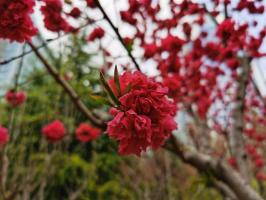What eats tomato plants leaves
Tomatoes are a favorite among home gardeners and farmers alike, but they face a wide range of threats from pests and diseases. One of the most common problems gardeners face is leaf damage caused by various insects and diseases. In this article, we will explore the common pests that eat tomato plant leaves and how to manage them.
Cutworms
One of the most notorious pests that eats tomato plant leaves are cutworms. These pests are the larval stage of various species of moths and are often found in the soil. Cutworms feed at night and can cause significant damage to seedlings as they cut the stems of the plants at the soil line, killing the plants in the process.
There are several ways to manage cutworms, including placing a collar around the base of the plant, handpicking the cutworms, and using insecticides containing Bacillus thuringiensis (Bt).
Aphids
Aphids are small, soft-bodied insects that feed on the sap of tomato plants. They are usually found clustered on the undersides of leaves and can cause severe damage to the plants. Infected plants will have curled and distorted leaves, and the leaves may turn yellow and fall off the plant.
One of the easiest ways to control aphids is by spraying the plants with a strong stream of water. Other methods of control include insecticidal soaps, neem oil, and ladybugs, as they are a natural predator of aphids.
Tobacco Hornworms
Tobacco hornworms are a common pest that eats the leaves and fruit of tomato plants. These pests are large, green caterpillars that can grow up to four inches long. They can quickly defoliate a tomato plant if left uncontrolled.
One of the most effective ways to manage tobacco hornworms is by handpicking them from the plants. Growers can also use Bacillus thuringiensis (Bt) insecticides, neem oil or spinosad to control these pests.
Whiteflies
Whiteflies are tiny, winged insects that are commonly found on tomato plants. They suck sap from leaves and excrete honeydew, which can attract ants and promote the growth of sooty mold. Infected plants will have yellow leaves and may eventually die from the infestation.
The management of whiteflies includes insecticidal soap, neem oil, and sticky traps to capture adult flies. Growers can also use biological control agents such as Encarsia formosa, a parasitic wasp that lays its eggs in the whitefly. The final method is to use insecticide sprays such as horticultural oil, which suffocates the insects.
Conclusion
Pests that feed on tomato plant leaves can cause significant damage to the plants if left uncontrolled. Growers should identify the pests and use appropriate management methods to protect the plants. By understanding the pests and their habits, growers can keep tomatoes healthy, strong, and productive.

 how many times do yo...
how many times do yo... how many planted tre...
how many planted tre... how many pine trees ...
how many pine trees ... how many pecan trees...
how many pecan trees... how many plants comp...
how many plants comp... how many plants can ...
how many plants can ... how many plants and ...
how many plants and ... how many pepper plan...
how many pepper plan...





























